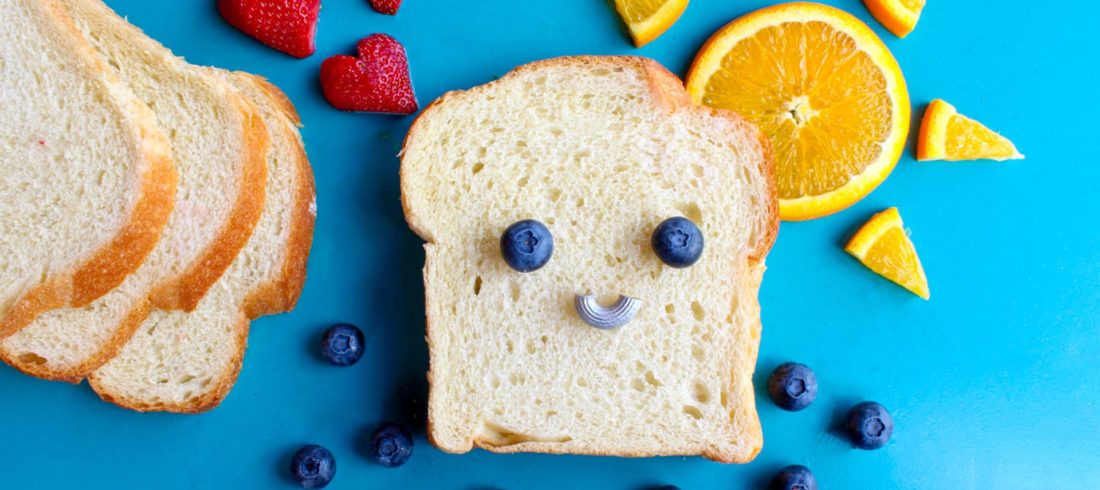With school back in session, we want to encourage parents to help their children get the fuel they need to learn, grow, and thrive. Food is fuel for your child’s body but not all food (and fuel by extension) is equal. How can parents help ensure that children’s growing bodies get the right nutrition all while they help encourage healthy eating habits?
Don’t despair. Recognize that as parents, you have the unique privilege and opportunity to lay a strong foundation for your children. Starting from the preschool years, parents can help children build a healthy and happy relationship with the food they eat and cultivate the kind of eating habits that will reward them with better health.
Here are a few tips for helping your youngsters master how to make the best food choices, even when grownups aren’t looking.
-
-
- Set a healthy standard at home. According to the Centers for Disease Control and Prevention (CDC), more than 19% of children and adolescents in the United States are obese. That’s about 14 million children and adolescents – a truly staggering statistic! Thankfully, parents can help their children by introducing them to healthy food choices at home. The CDC recommendations include vegetables, fruits, and whole-grain products; low-fat or non-fat milk or dairy products, including cheese and yogurt; and lean meats such as poultry, fish, lentils, and beans for protein. You can also be active together as a family as physical activity complements a healthy diet. Get outside together and take walks; play old-school yard games with lots of dashing around. There’s no greater gift you can give your children than setting a healthy standard at home – and working to be healthy and happy yourself.
-
- Let children and adolescents take ownership. Do your school-age children enjoy making snacks and meals? Help them develop this important life skill. Even kindergarteners can help make lists and shop for groceries as well, an activity rich with built-in learning and opportunities for talking, rather than lecturing, about which food choices are better or even best and why.
-
- Share family meals, whether it’s the two of you or ten. According to research*, regular family meal time is associated with lower rates of depression, anxiety, and eating disorders to name a few. Sharing food together adds layers of emotional nutrition to what’s on your plates. A good relationship with nourishment can last a lifetime when built on a strong foundation.
-
- Explain the basics. Children’s bodies need a balance of about half fruits and veggies, half whole grains and lean protein. Teach portion size: a serving of rice or pasta the size of their fist, protein the size of their palm. It’s the mix of rich fuel that will energize them to do and be and learn so many wonderful things; have fun talking about the basics and it will stick.
-
- Keep a close eye on the school cafeteria. You may be pleased by what you find as you inquire for details regarding the types of food on the menu at your child’s school. Whether public or private, many schools are working to craft healthier menus. If you’re not satisfied with the nutritional value of the foods at your child’s school, however, consider your options. For some parents the answer may be to provide lunch for the child instead. Others may be inclined to lobby for at least a moderate improvement as well as providing supplementary meals in lunch bags. Parents can also inform themselves about the standard governing nutrition in public school as these standards are accessible online based on work done by the U.S. Department of Agriculture’s Food and Nutrition Service. The more you know, the more prepared you will be to advocate for improvement in your school-aged child’s access to healthy meals when he or she is outside of the home.

- Keep a close eye on the school cafeteria. You may be pleased by what you find as you inquire for details regarding the types of food on the menu at your child’s school. Whether public or private, many schools are working to craft healthier menus. If you’re not satisfied with the nutritional value of the foods at your child’s school, however, consider your options. For some parents the answer may be to provide lunch for the child instead. Others may be inclined to lobby for at least a moderate improvement as well as providing supplementary meals in lunch bags. Parents can also inform themselves about the standard governing nutrition in public school as these standards are accessible online based on work done by the U.S. Department of Agriculture’s Food and Nutrition Service. The more you know, the more prepared you will be to advocate for improvement in your school-aged child’s access to healthy meals when he or she is outside of the home.
-
- Be patient with picky eaters and avoid making a huge deal of their dislikes. Perhaps your child is picky or simply doesn’t like to try new foods. Of course, it’s nice if children are willing to try a bite of something new. It’s a lot likelier to happen, though, in the future if you choose not to let it become a power struggle or a disciplinary issue. Though having a picky eater at home may be a challenge, be patient. Taste bud sensitivities can change with age; there’s every chance that a child whose tastes seem sadly narrow at five will be cooking and enjoying epicurean veggie stir-fries at seventeen. If your child, however, is an extremely picky eater and you are concerned about whether or not he or she is getting the right amount of nutritious foods, discuss your concerns with your child’s pediatrician.
-
- Keep healthy snack choices on hand. Eating small amounts frequently is ideal for children, especially for active school-aged kids. Whole grain crackers, veggie sticks and cheese chunks go beautifully with a game or a book. Nuts and grapes are “big kid treats” that they weren’t allowed to have as toddlers. Fruit and berry assortments are sheer juicy heaven. Having healthy options at hand will go a long way in helping children develop good eating habits that can continue throughout their lifetime.
-
- At the supermarket, teach children about shopping. Help children understand the logistics involved in shopping for healthy foods at the supermarket: the outside aisles for essentials — produce, protein, grains and dairy — and largely avoiding the inner aisles of prepared foods, especially that one aisle that’s nothing but snacks and soda. Explain the basic principles of choosing fresh foods rather than processed foods, which often include chemical preservatives and other ingredients that could over time have a negative impact on one’s health.
-
- Take your school-aged children to the nearest farmers market or U-Pick – or whichever options for fresh foods are most convenient for you. This could be an inexpensive outing, packed with nutrition for mind and body alike. Chat with growers; many of them love to talk about the foods they grow and share their unique experiences as farmers, all while teaching the next generation about what foods really look like from seed to produce.
-
- Keep it simple when it comes to hydration. Steer clear of sodas and powdered drink mixes and other drinks loaded with added sugars. According to the CDC, water and lowfat milk are the healthiest ways to hydrate. Freshly-squeezed juice and fruit smoothies are fun to make and tasty as well.
-
- Don’t panic when children rave about unhealthy treats. As parents, remember that you are building a foundation for your children and that regardless of your best efforts, children will get ample opportunity to try foods that may not be your preference. A visit to a friend’s or a family member’s home may lead to your child consuming a salty or too-sweet treat or even a fast food feast. Overreacting risks transforming the less-than-ideal foods into “forbidden fruit”. Rather than demonizing these foods, take the opportunity to reframe the situation and the foods involved. For instance, do some research. Google some of the ingredients your beloved offspring ate and laugh together at your efforts to pronounce the crazy long names of the preservatives and dyes. A sense of humor always helps. You’ll likely learn much more together in the process as well.
-
- It’s never too late to begin. Most if not all parents will acknowledge that parenting is tough business. Don’t be hard on yourself. There is always room to learn and improve. If healthy eating isn’t your family’s strong suit, recognize you can start making changes today. Small steps can lead you to your destination so set some SMART goals and hold yourself – and by extension, your family – accountable.
-
At Premier Medical, we have a team of medical professionals including pediatricians who care for children from birth to age 21. We welcome the opportunity to answer your questions throughout the school year as you work to set a high standard for nutrition and guide your school-aged children into developing healthy eating habits. Feel free to share your experiences with us or schedule your child’s next wellness visit by contacting our Pediatric Division today!
*https://www.gse.harvard.edu/news/20/04/harvard-edcast-benefit-family-mealtime

